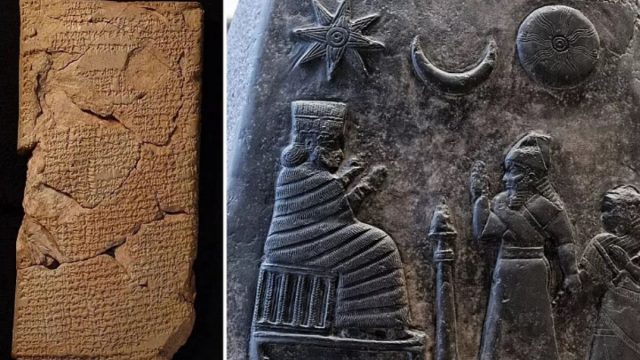Some ancient tablets acquired by the British Museum decades ago have finally been deciphered, and they do not exactly bring good news for the kings.
A team of researchers has successfully deciphered 4,000-year-old writings in ancient Babylonian cuneiform tablets that had remained untranslated for more than a century.
The latest research has focused on four tablets from the collection of the British Museumwhose origin dates back approximately to the year 1200 BC. and they come from the ancient city of Sippar, in modern-day Iraq.
Published in the ‘Journal of Cuneiform Studies’, newly deciphered texts reveal that the Babylonians They saw lunar eclipses not only as celestial events, but as ominous signs of death and destruction.
A tablet notes that “an eclipse in the morning vigil” means “the end of a dynasty.” Another warns: “If an eclipse darkens from its center at once and clears at once: a king will die, destruction of Elam.”
The writings would have been written by astrologers of the mesopotamian civilization and now represent the oldest known records of omens of lunar eclipses.
“The omens derived from lunar eclipses were of great importance for good Government,” the researchers wrote in an article recently published in the ‘Journal of Cuneiform Studies‘.
“In later times there is abundant evidence that show that astrological observation “It was part of an elaborate method of protecting the king and regulating his behavior according to the wishes of the gods.”
Fortunately for the kings, There were methods to counteract these omens, such as consulting oracles – experts who examined the entrails of animals – and carrying out the prescribed rituals.
Who were the Babylonians?
The Babylonians were a ancient civilization of the Akkadian language that flourished in Mesopotamia, a region located between the Tigris and Euphrates rivers, in modern-day Iraq and parts of Syria and Iran.
They left a huge mark on the course of the history of humanitywith important contributions to science, agriculture, literature and law. For example, your base 60 number system It is still used today to measure time and angles, and produced some of the earliest literary works, such as the Epic of Gilgamesh.
Babylon, which began as a modest city-state at the end of the third millennium BC, became famous under the reign of King Hammurabi (1792-1750 BC), whose brutal approach to justice and legal code remains one of the first and most complete history.
Its strict laws were inscribed on a large stone stele, which originally measured about 2.25 meters high and is today preserved in theLouvre Museum from Paris. Hammurab’s code of lawsi contains 282 ruleseach of them with specific punishments. Here are some examples of its toughness:
Ley 21: “If someone makes a hole in a house (breaks in), he will be executed in front of that hole and buried.”
Ley 157: “If anyone is guilty of incest with his mother after his father, both will be burned.”
Ley 196: “If a man destroys another man’s eye, they will destroy his eye. If a man breaks another man’s bone, they will break his bone.”
Perhaps one of the best known characteristics of Babylon were the Hanging Gardensoften listed as one of the Seven Wonders of the Ancient World.
It is believed that they were near the royal palace of babylon and were described as an extraordinary feat of engineering with an ascending series of stepped gardens containing a great variety of trees and vines.
Traditionally, the gardens are believed to have been created by Queen Sammu-ramat, who ruled between 810 and 783, or by King Nebuchadnezzar II, who supposedly commissioned them to console his wife Amytis, who longed for the mountains of her homeland.
However, despite the extensive archaeological work carried out in Babylon and its surroundings, no definitive evidence of the existence of the Hanging Gardens has been foundleading many to think that they could be the stuff of myths.







